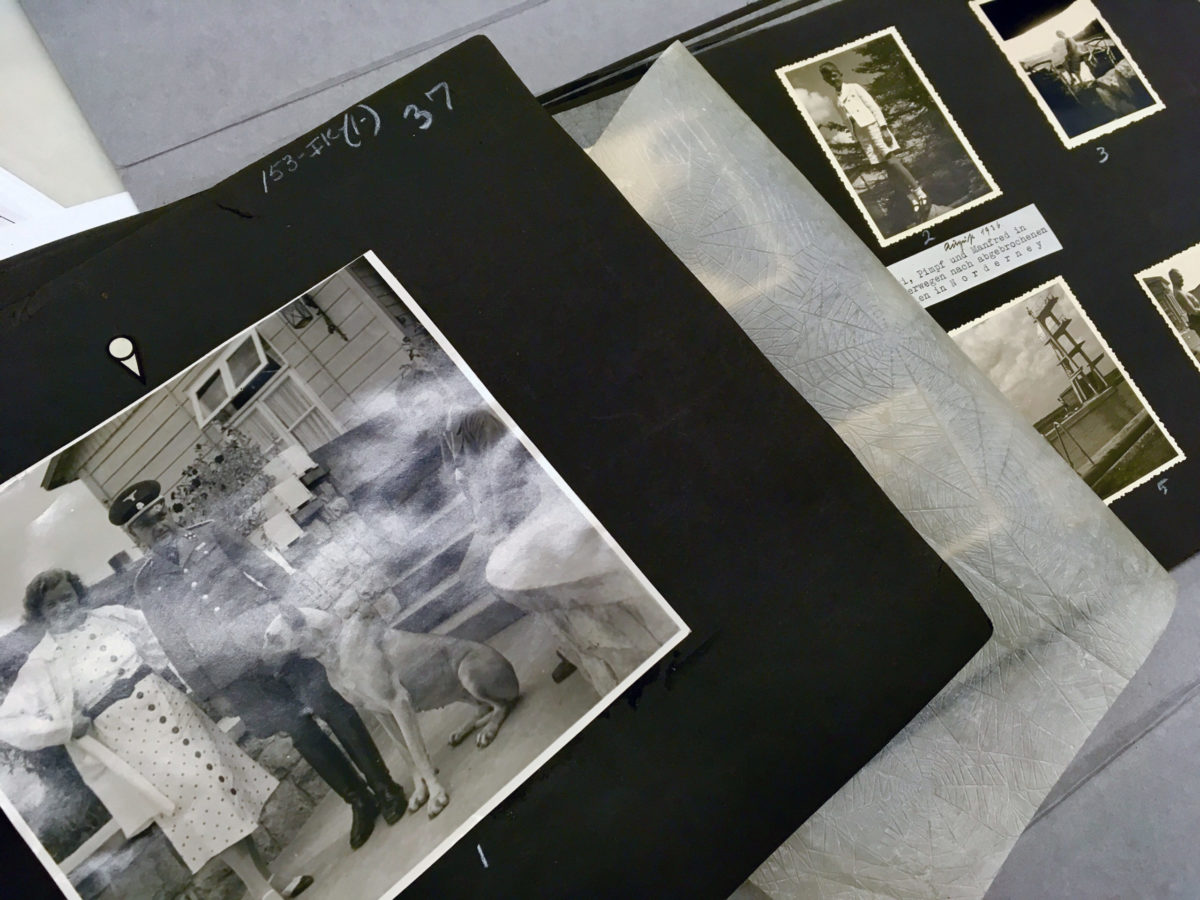From time to time, I do photo research at the National Archives repository in College Park, Maryland. As often as I see photos I’ve seen a thousand times before, I run across things completely new to me. One of those I found especially chilling.
I was sifting through images of Germany’s Buchenwald concentration camp for an upcoming story and found myself examining the family photo album of Karl-Otto Koch, the camp’s first commandant. The album, full of mostly mundane photos, was assembled by his wife, Ilsa Koch — who became known as “The Witch of Buchenwald” (among other, harsher nicknames) because of her savage treatment of prisoners at the camp. She’s notorious in particular for her collection of lampshades and other items made from human skin, often bearing a tattoo she’d spotted and taken note of on a living prisoner.
What creeped me out was that in my hands I held the album where, like so many of us, she had carefully placed her family photos — her husband, their kids, the dog. It showcased everyday behavior from someone who then went off to participate in some unthinkably gruesome and sadistic things. Imprisoned after the war for her crimes, Ilsa Koch hanged herself in her cell in September 1967.
historynet magazines
Our 9 best-selling history titles feature in-depth storytelling and iconic imagery to engage and inform on the people, the wars, and the events that shaped America and the world.


